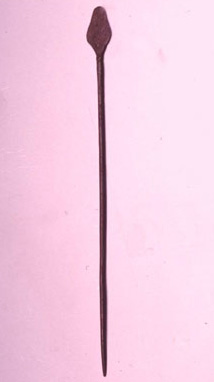
Click here to view image
Tupu, XII - II sec. b.C (Ancón)
Metalli (argento?)
Tupu (coat pin) with leaf-shaped head

Click here to view image
Tupu, XII - II sec. b.C (Ancón)
Metalli (argento?)
Tupu (coat pin) with leaf-shaped head

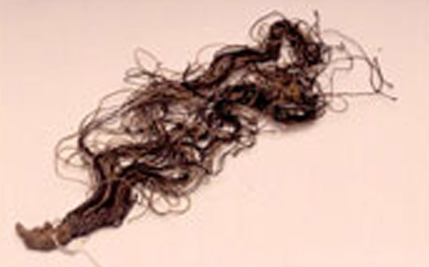
Click here to view image
Unfinished braid
Vegetable fiber and camelid fiber. Coronation (twining), double-face

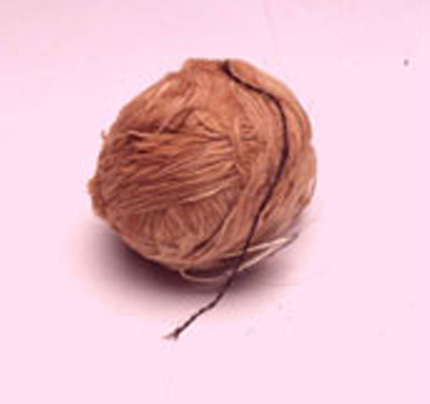
Click here to view image
Ball of yarn
Esso Standard s.d. donazione
Ancón
Ball of yarn
ball
XII-II b.C.
Unità di misura: cm; Larghezza: 3.5; Lunghezza: 5.5; Spessore: 3
Perù
cotone naturale
L'America indigena nelle collezioni del Civico Istituto Colombiano di Genova. - Genova, Palazzo Doria - Marzo 1990
Ball of undyed natural cotton, single ply z-twisted. Remarkable is the presence of brown hair twisted around the ball and also a small fragment of camelid fiber yarn.

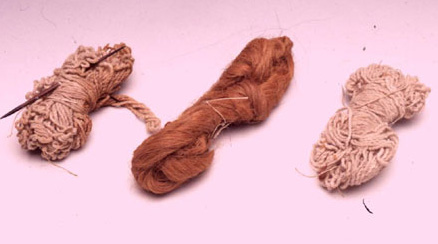
Click here to view image
Ball, 1250 - 200 B.C. (Ancón)
Cotton, hair fragments, wood stick fragments

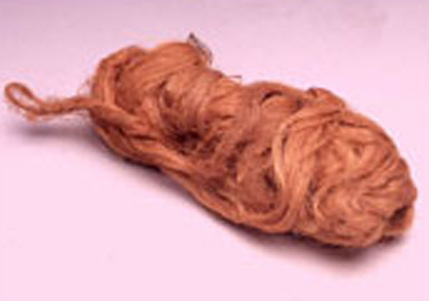
Click here to view image
Skein , 1250 - 200 B.C. (Ancon)
Cotton, unidentified fibre (vegetable fibre), hair fragments

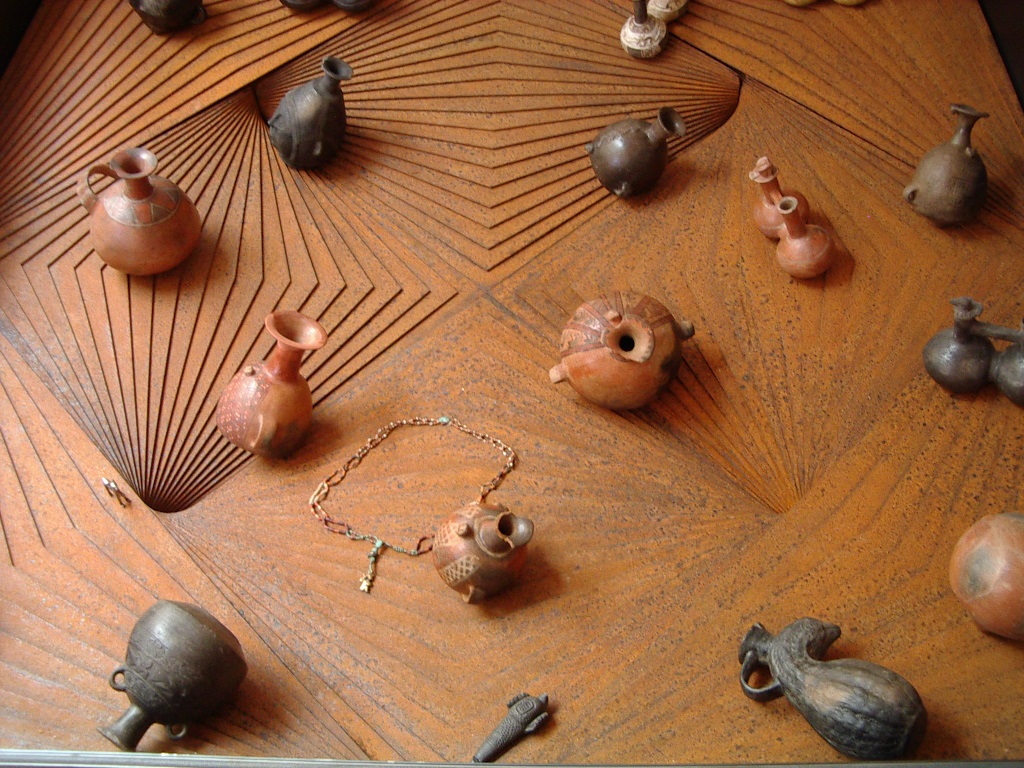
Click here to view image

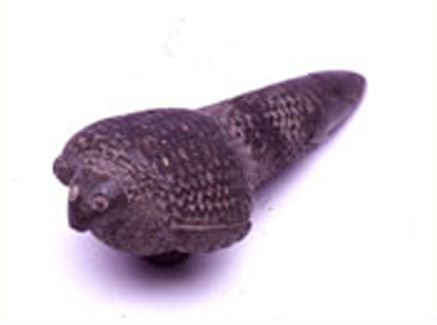
Click here to view image
Figurine in the shape of armadillo XV-XVI sec. A.D (Inca)
Unità di misura: cm
Altezza: 3
Larghezza: 5
Lunghezza: 13
Perù
Carved and engraved stone

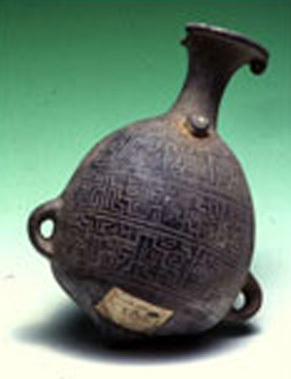
Click here to view image
Arybalo, XV-XVI sec. A.D. (Chimù-Inca)
Moulded terracotta
Arybalo with engraved geometric decoration (pointed bottom jar, with high neck and flared, equipped with two small lateral handles and small application bilobed)

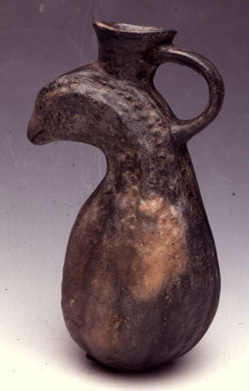
Click here to view image
Pumpkin-shaped vase XV-XVI sec. A.D. (Chimù-Inca)
Unità di misura: cm
Altezza: 23.5
Diametro: 13.5
Perù
Moulded terracotta

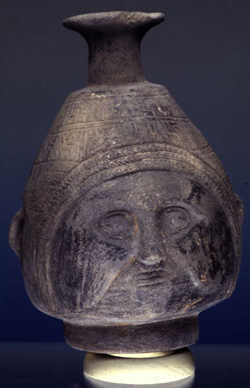
Click here to view image
Amphora cephalomorph, XV-XVI sec. A.D (Chimù-Inca)
Moulded terracotta
Amphora cephalomorph with a face with eyes, nose and ears in relief, hair with engraved braids, headdress with engraved geometric decoration


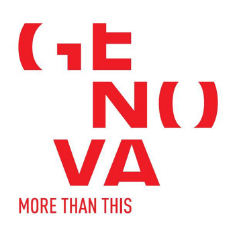
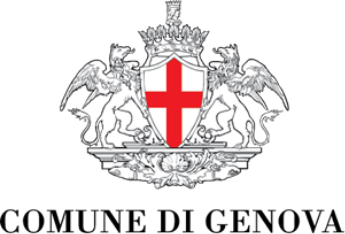
Headquarters:
Municipality of Genoa - Palazzo Tursi
Via Garibaldi 9 - 16124 Genoa
C.F / VAT 00856920102